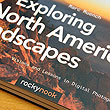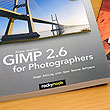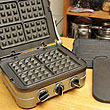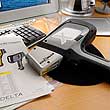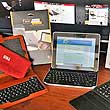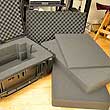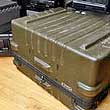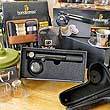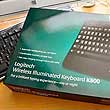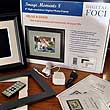Wow, this could not be easier: a video camera the size of my cell phone, and very clear instructions for its assembly and use! We were going on vacation in the Caribbean so we easily packed and transported it. Also provided was an underwater housing so we were able to take it with us on our dives. Andy is an underwater still photographer and I would never dream of carrying all the equipment necessary for that (two 60 gallon coolers full of cameras, housings, flashes, and lots more) but this little mini marvel could be fun.

After a little practice on dry land filming the locals and some of the guests at the bar and in the pool, I realize that this is way, way beyond easy. There is on-off, start-stop, zoom in- zoom out and no flash requirements. The picture is exceptionally clear, the sound is pure (do I really sound that whiney?), and I know what I'm doing. Next stop: the deep blue Caribbean Sea.

Not so fast. First we have to charge the battery. The directions say the battery takes about 7 hours to charge the Flip Ultra battery by connecting the USB arm on the Flip to the computer's USB port. A recording light turns on while charging and turns off when the battery is fully charged. Well, when they say 7 hours, that's what they mean. We were hurrying along to make our first dive and did not "fully" charge the battery. When I first dove down below the boat, I turned the Flip on and immediately the indicator flashed a low battery. Oh well. There is a lanyard provided on the underwater camera housing so I just attached it to my buoyancy control vest and tucked it into my vest pocket. Try that with your big old camera gear!

After fully charging the battery we were off to dive again. It was exciting capturing pictures of moray eels, colorful fish, crabs and octopus. The hard part was staying stationary underwater. As you might imagine, any slight current causes a diver to sway and rock. Unless you are sporting a camera, it is usually a pleasant sensation. When I checked my images later, I quickly realized that at least half the things I was shooting were in and out of the photo frame, especially because I was not anchored in one place. That can be hard if a diver is avoiding fire coral, stinging urchins, and disturbance of all living things. So another detail to work out was how to steady myself underwater which was completely situational – wind, current, bottom conditions, and visibility were all variables which influenced my shooting stability.

I was trying to shoot some and then conserve the battery but that was not the best idea. When I jumped off the boat with all my dive gear and went under the boat to wait for the other divers, I would turn the camera on and shoot whatever was there. Then I would turn it off until we swam to a site where there was something more interesting. We learned that in depths over 15 feet it was impossible to turn the camera back on. It may have been the housing or something about the depth and pressure, I don't know. But no one in our group could turn it back on. What that meant was this: I either turned it on and left it on OR I would ascend to 15 feet and turn the camera on. Not a big deal, but it was a mystery for us.

When you are underwater, you must pay attention to your surroundings, your air, your buoyancy, and a lot of other very important things. If I left the camera on continuously I shot lots of great stuff but there was a lot of footage to be edited out because I had to tend to other dive related things as well. So editing was our next stop. FlipShare is the built in software that makes organizing, editing and sharing video incredibly simple. While using the software, you are able to make custom movies with music, snap photos from the video, and share videos online or by email. They include a tutorial with detailed instructions for all the features.

I downloaded the FlipShare into my Mac. Then I opened the tutorial and started working. Most tasks were easy to do and directions were clear and easy to follow. I now have a new appreciation for editors and what they do to create seamless videos. I was able to make my first underwater video and then post it on YouTube. Click here to see the original HD version (250 MB) of the video shot using the Flip.
It was great to use the Flip Video Ultra HD with underwater housing. I highly recommend it to interested users on land and underwater. [Permalink] - By Candace Storm
Pros:
- Simple, compact, practically idiot-proof
- Easy to carry and store
- Clear picture and sound
- Easily downloaded to computer, software included
Cons:
- I could not turn the camera on below 15 foot depth. It could be turned off at any depth. On land, not a problem.
- Does not focus at very close distance
- Learning curve for editing is steep at the beginning, gets easier
- Underwater stability is not a given – must practice!!!
|


















